Abstract
To determine optimal clinical laboratory techniques for detecting pediatric bacteremia, we studied 7,768 consecutive blood cultures in a 1-year period. Blood was inoculated into one vented 50-ml bottle of brucella broth with 0.05% sodium polyanetholsulfonate and one unvented 50-ml bottle of Columbia broth with 0.05% sodium polyanetholsulfonate and 0.05% cysteine. Bottles were visually examined for growth on days 1 through 7 and blindly subcultured aerobically and anaerobically on days 1, 2, and 7. There were 724 (9.3%) positive cultures, and 484 (6.2%) were clinically significant. The most frequent isolates from bacteremic patients were Haemophilus influenzae (24%) and Streptococcus pneumoniae (17%). Growth was noted in only one bottle in 25% of clinically significant isolates. Bottles inoculated with greater than or equal to 1 ml of blood became positive earlier than bottles inoculated with less than 1 ml. After 1 day of incubation, 48% of the clinically significant cultures showed growth on visual examination, whereas 85% showed growth on subculture. Only 19% of Haemophilus isolates were detected visually on day 1, whereas 88% were recovered on subculture. By day 7, 3.5% of all isolates (including 18% of pneumococcal isolates and 1% of Haemophilus isolates) could no longer be recovered on subculture. We conclude that a two-bottle blood culture system and blind subculture within 24 h will optimize detection of pediatric bacteremia.
Full text
PDF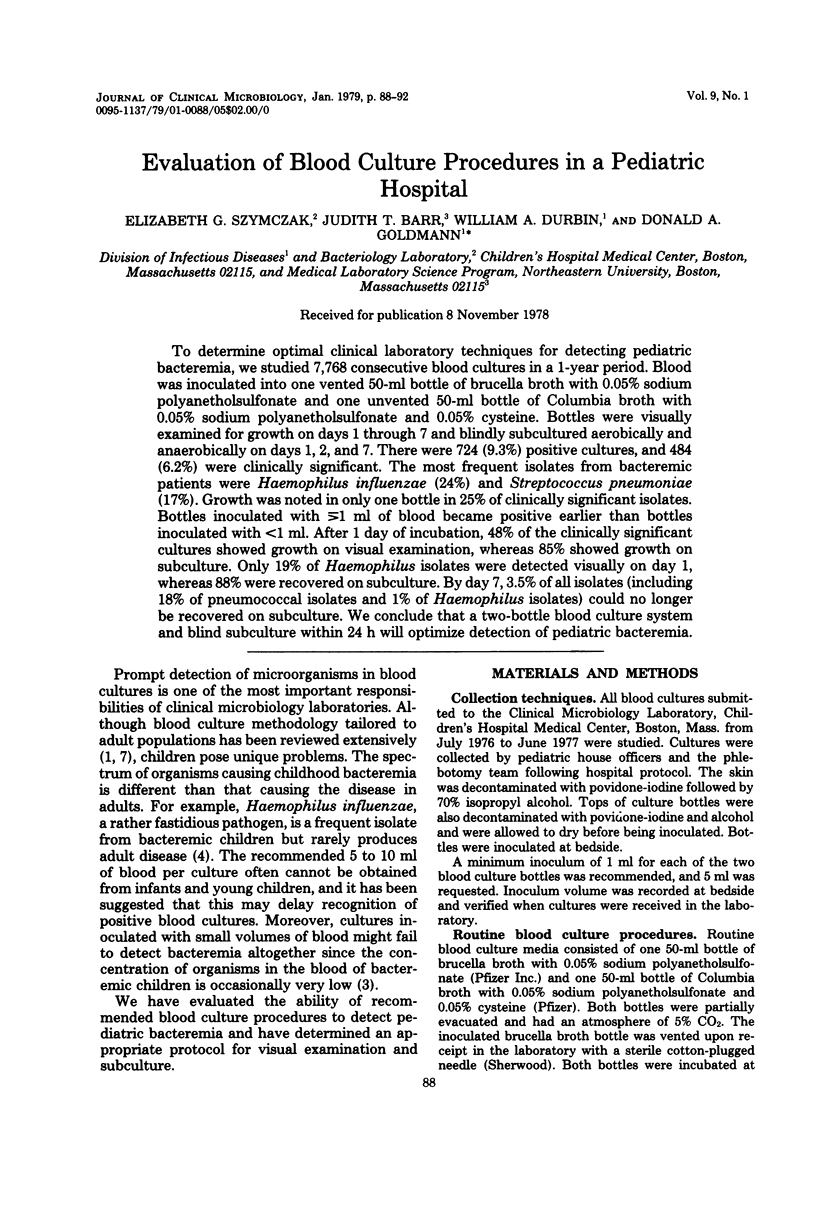
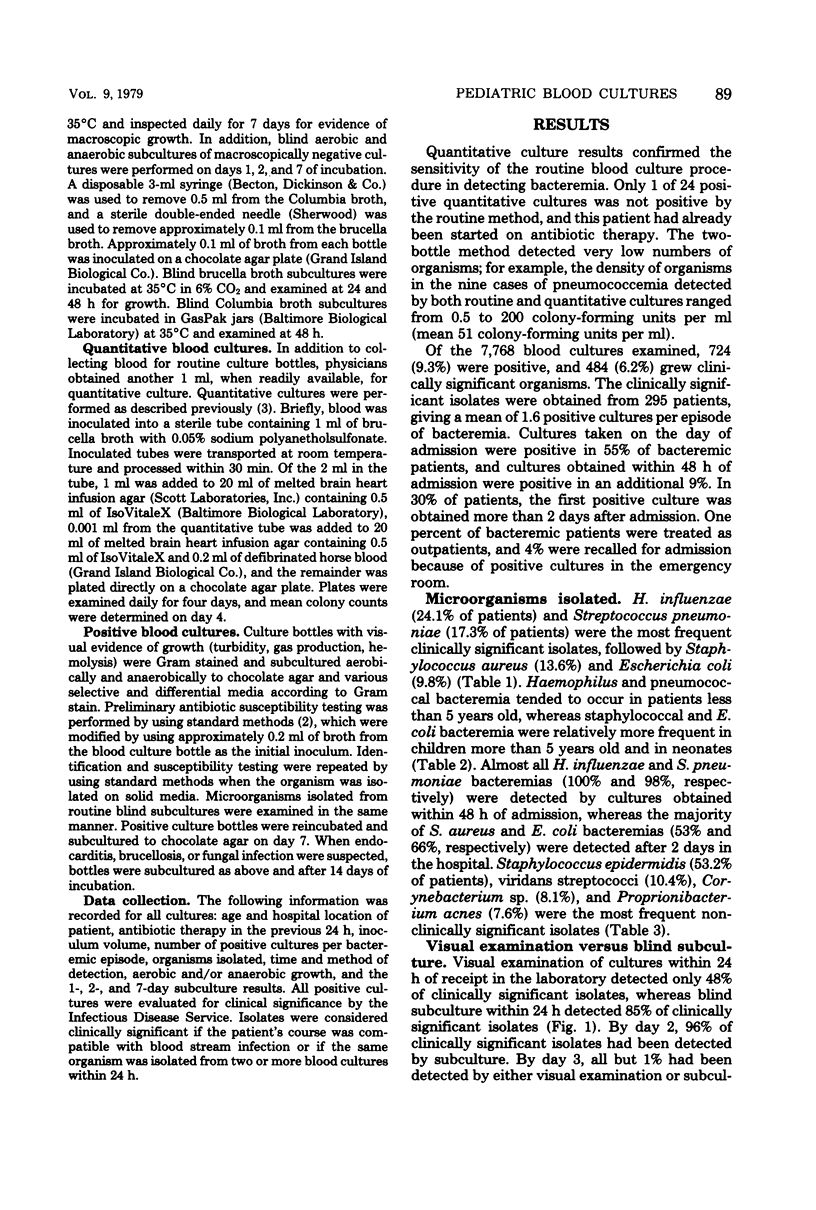
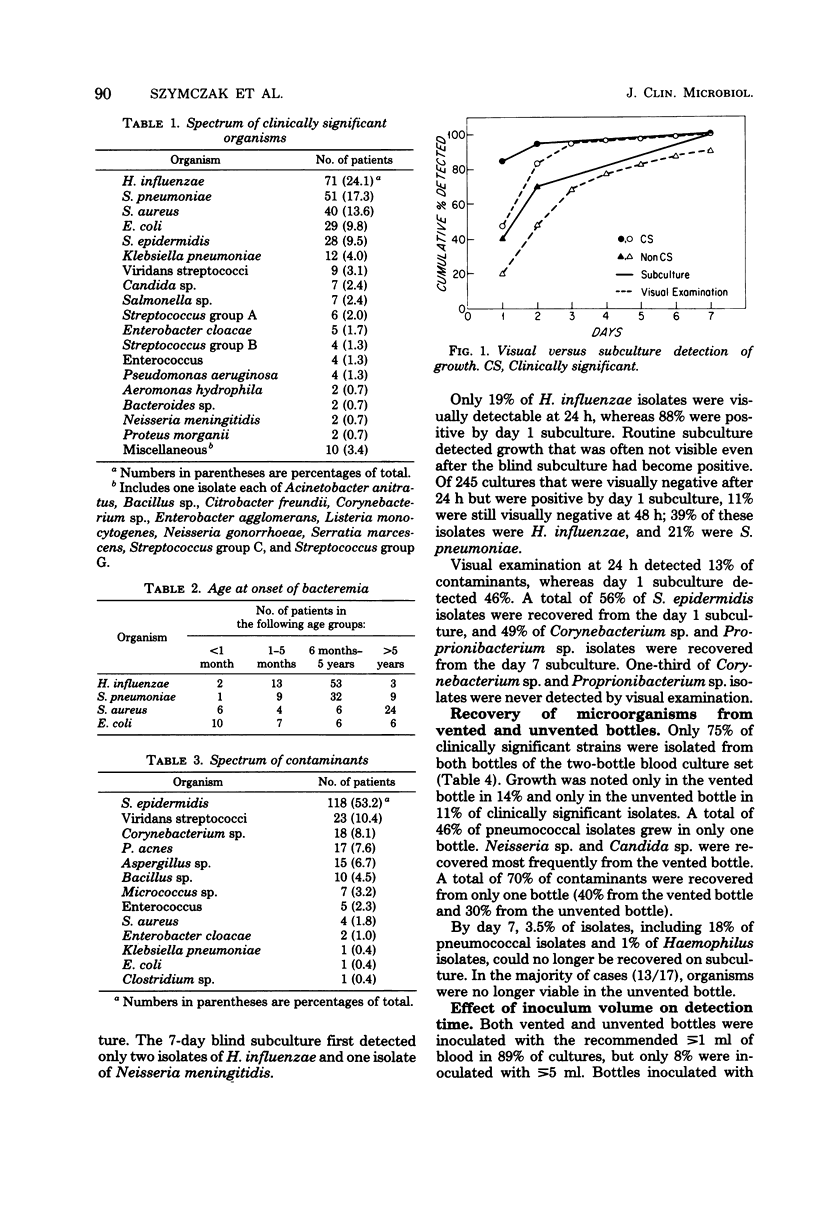
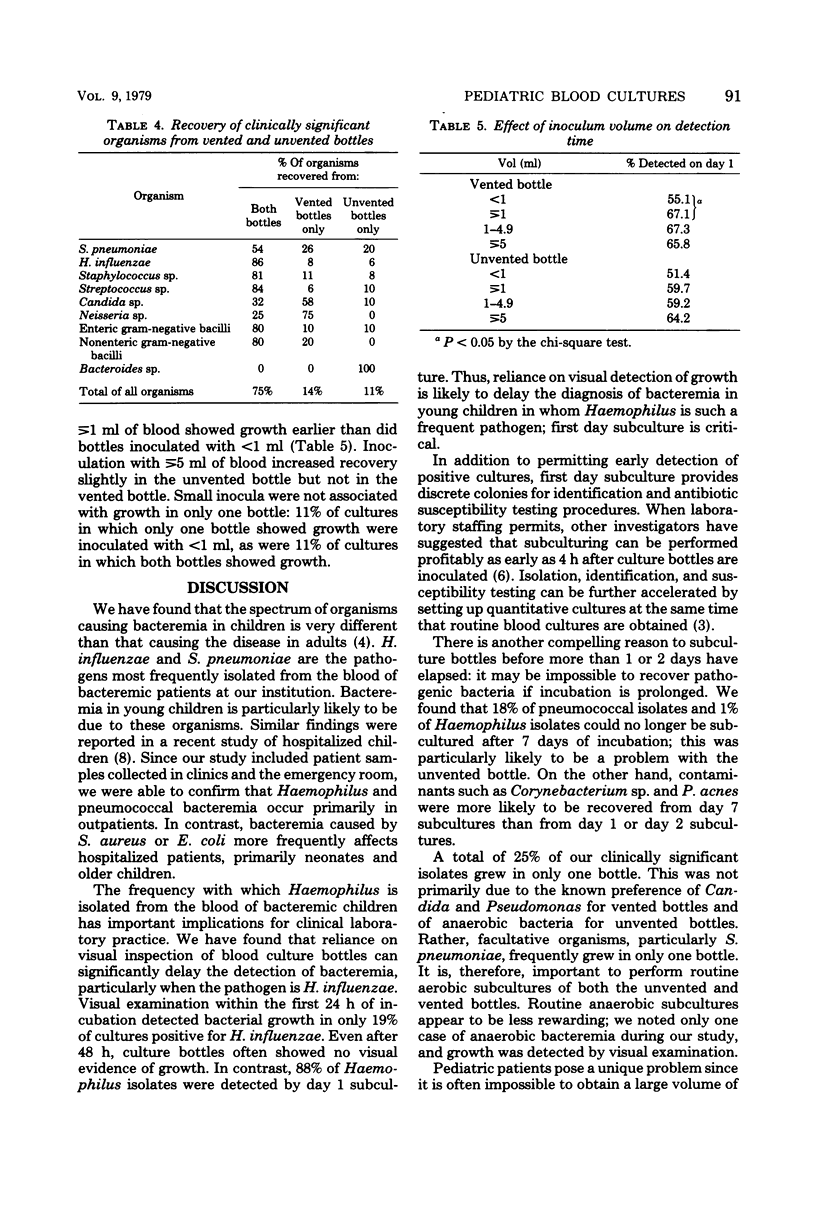
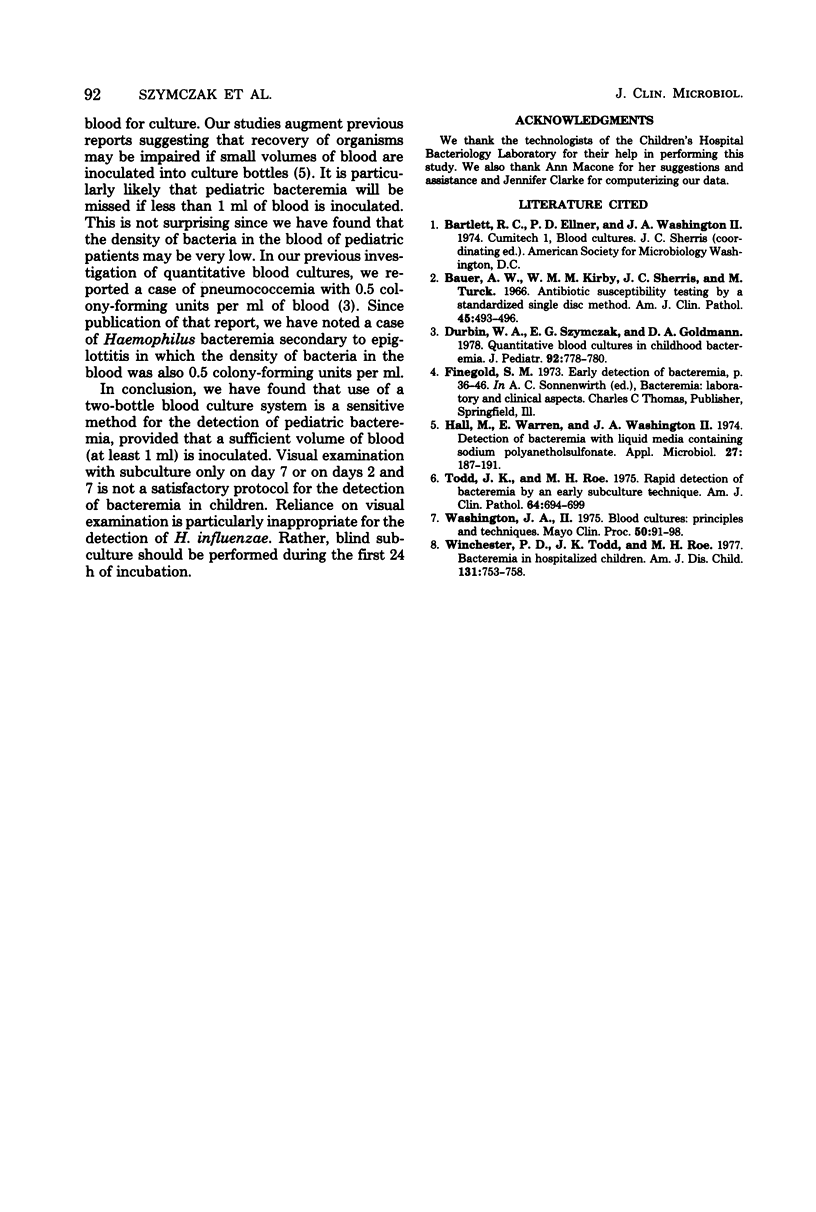
Selected References
These references are in PubMed. This may not be the complete list of references from this article.
- Bauer A. W., Kirby W. M., Sherris J. C., Turck M. Antibiotic susceptibility testing by a standardized single disk method. Am J Clin Pathol. 1966 Apr;45(4):493–496. [PubMed] [Google Scholar]
- Durbin W. A., Szymczak E. G., Goldmann D. A. Quantitative blood cultures in childhood bacteremia. J Pediatr. 1978 May;92(5):778–780. doi: 10.1016/s0022-3476(78)80151-6. [DOI] [PubMed] [Google Scholar]
- Hall M., Warren E., Washington J. A., 2nd Detection of bacteremia with liquid media containing sodium polyanetholsulfonate. Appl Microbiol. 1974 Jan;27(1):187–191. doi: 10.1128/am.27.1.187-191.1974. [DOI] [PMC free article] [PubMed] [Google Scholar]
- Todd J. K., Roe M. H. Rapid detection of bacteremia by an early subculture technic. Am J Clin Pathol. 1975 Nov;64(5):694–699. doi: 10.1093/ajcp/64.5.694. [DOI] [PubMed] [Google Scholar]
- Washington J. A., 2nd Blood cultures: principles and techniques. Mayo Clin Proc. 1975 Feb;50(2):91–98. [PubMed] [Google Scholar]
- Winchester P. D., Todd J. K., Roe M. H. Bacteremia in hospitalized children. Am J Dis Child. 1977 Jul;131(7):753–758. doi: 10.1001/archpedi.1977.02120200035009. [DOI] [PubMed] [Google Scholar]


